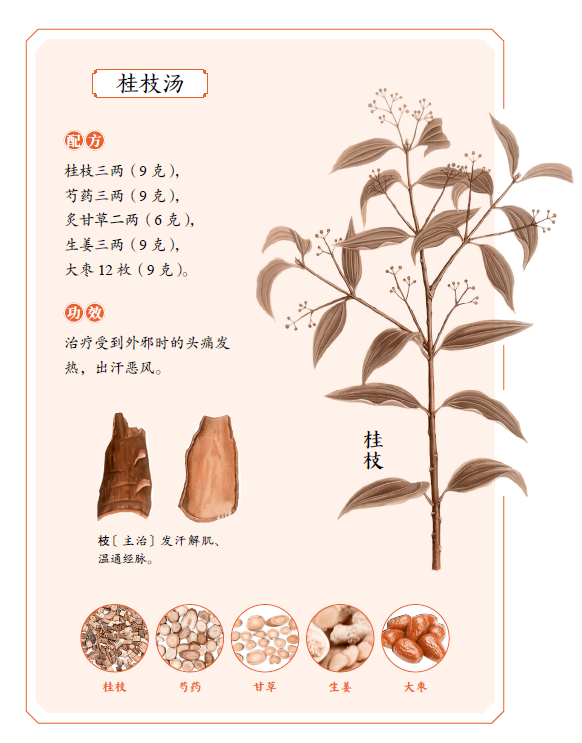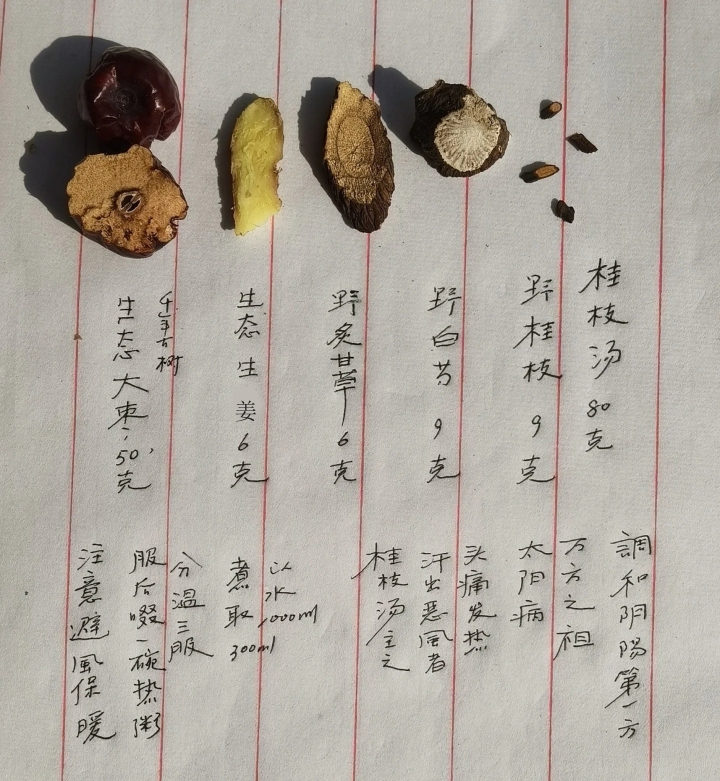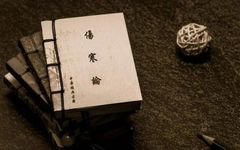
Gui Zhi Tang Zheng (Gui Zhi Decoction Pattern)
Gui Zhi Tang is the first formula in the “Shang Han Lun” (Treatise on Cold Damage). Before discussing Gui Zhi Tang, let us first understand what a decoction pattern is.
The “Shang Han Lun” is fundamental to TCM clinical practice, establishing a diagnostic system that is crucial for identifying a person’s pathological state through a series of symptoms, thereby determining the appropriate formula. The patterns of differentiation in later generations actually stem from this. When symptoms are present, you can use this formula, and it works particularly well. These symptoms connected together are referred to as decoction patterns.

After understanding decoction patterns, we will discuss Gui Zhi Tang using the first medical case from Xu Shuwei’s “Shang Han Jiu Shi Lun”.
The first medical case describes a man named Ma Hengdao, who in the spring of the Gengxu year, contracted an external pathogenic disease, initially presenting with fever, headache, nasal congestion, nausea, spontaneous sweating, and aversion to wind. Fever and headache need no further explanation; what do “nasal congestion”, “nausea”, “spontaneous sweating”, and “aversion to wind” mean?
My understanding of “nasal congestion” is that when your nose is blocked, you will try hard to clear it, and sometimes when it clears slightly, there is a sound, which is called nasal congestion.
“Nausea” refers to the discomfort in the stomach that patients feel during an external pathogenic attack, with a sensation of wanting to vomit; “spontaneous sweating” means sweating easily with slight movement; “aversion to wind” indicates that the patient is afraid of wind.
Xu Shuwei stated that connecting these symptoms together constitutes the Gui Zhi Tang pattern.
In ancient times, it was called the Gui Zhi pattern; now we call it the Gui Zhi Tang pattern. What are its symptoms? They are as Xu Shuwei described: “fever, headache, nasal congestion, nausea, spontaneous sweating, aversion to wind.” As Zhang Zhongjing stated in the original text, “In Taiyang disease, with wind invasion, Yang is floating and Yin is weak; when Yang is floating, heat is spontaneously generated; when Yin is weak, sweating occurs. If there is aversion to cold and aversion to wind, with fever and nasal congestion, Gui Zhi Tang is the main treatment.”
The main symptoms occur when one first feels external cold, with the body experiencing fever, sweating, fear of cold, and fear of wind, etc. Each person’s reaction is different; some may not sweat, while others sweat easily with movement, and these individuals are very much in line with the Gui Zhi Tang pattern.

Gui Zhi Tang is particularly simple
Gui Zhi Tang is particularly simple; it is the first formula in Zhang Zhongjing’s “Shang Han Lun”, indicating its importance.
The original formula of Gui Zhi Tang consists of “Gui Zhi (Cinnamon Twig) 3 liang”, which is now 9 grams. One liang in Zhang Zhongjing’s time is now converted to 3 grams. However, later investigations found that one liang in the Han Dynasty was equivalent to about 15 grams today. Therefore, strictly speaking, the three liang in the original text of Gui Zhi Tang should be nearly 50 grams, but the amount we use now is much less, typically 9 grams.
The second herb is Shao Yao (Peony), also 3 liang, now used as 9 grams.
Next is Zhi Gan Cao (Honey-fried Licorice) 2 liang, now used as 6 grams. Sheng Jiang (Fresh Ginger) 3 liang, sliced. Da Zao (Jujube) 12 pieces, split.
This is the original composition of Gui Zhi Tang, very simple: Gui Zhi, Shao Yao, and Zhi Gan Cao, along with Sheng Jiang and Da Zao.
When I prescribe Gui Zhi Tang, I rarely prescribe such a small amount; I can increase the dosage. When taking the medicine, there are nuances; it is not meant for the patient to drink it all at once. Zhang Zhongjing said to first drink a bowl and see if sweating occurs, then have a bowl of porridge, followed by another bowl of medicine, and another bowl of porridge, observing if sweating occurs. If sweating occurs, stop; if not, continue drinking until sweating occurs.
Thus, although the dosage is large, the measure is to achieve slight sweating in your body.
This is the principle behind Gui Zhi Tang. Therefore, there is no need to be overly concerned about the dosage; use sweating as the measure. Each person’s physical condition is different, and their constitution varies, so the amount taken will also differ.
【Food and Medicine are of the Same Origin】Traditional Recipe Collection: Decoctions【Gui Zhi Tang】

【Efficacy】 The first formula for harmonizing Yin and Yang, treating headaches, fever, and aversion to wind in colds; it can also be taken regularly to regulate the body’s Yin-Yang balance.
(Shang Han Article) In Taiyang disease, with headache, fever, sweating, and aversion to wind, Gui Zhi Tang is the main treatment.
【Ingredients】 The herbal composition includes Ye Gui Zhi (Wild Cinnamon Twig) 9g, Ye Bai Shao (Wild White Peony) 9g, Ye Zhi Gan Cao (Wild Honey-fried Licorice) 6g, Sheng Jiang (Fresh Ginger) 6g, Qian Nian Gu Shu Da Zao (Ancient Jujube from Thousand-Year-Old Trees) 50g.

【Preparation】 Boil 1000ml of water to extract 300ml, divided into three warm doses, and after taking, sip a bowl of hot porridge.
【Contraindications】
1. Alcoholics should avoid: If a person who drinks alcohol is ill, Gui Zhi Tang should not be given, as it will cause vomiting due to the dislike of sweetness by alcoholics.
2. Those with asthma should avoid: If a person with asthma is present, Gui Zhi Tang should be modified with Hou Po (Magnolia Bark) and Xing Ren (Apricot Kernel).
3. Those with vomiting and nausea should avoid: Anyone who vomits should not take Gui Zhi Tang, as it will lead to vomiting of pus and blood.


